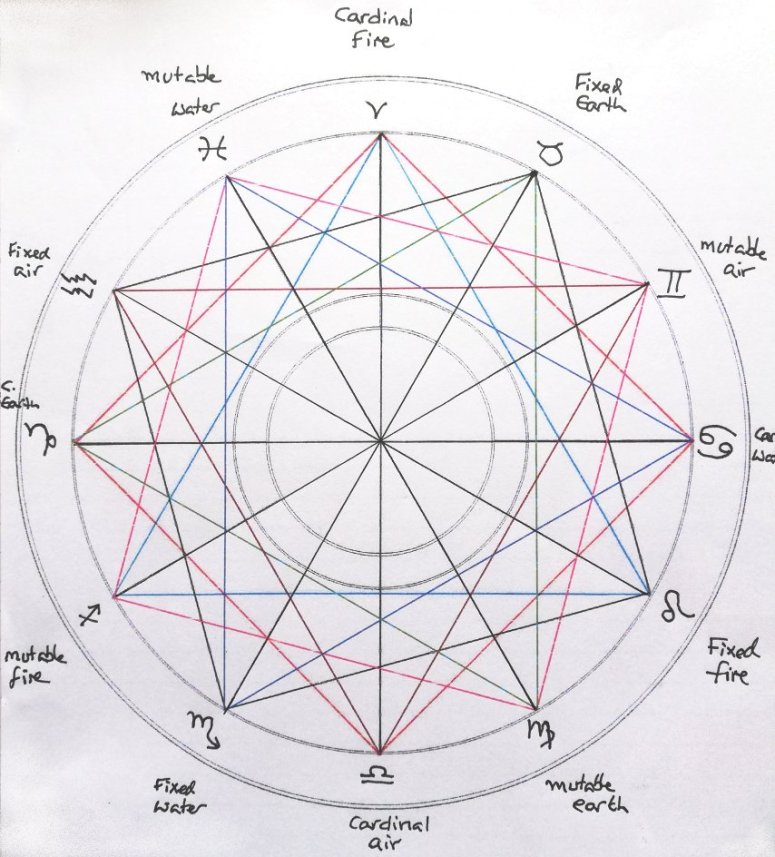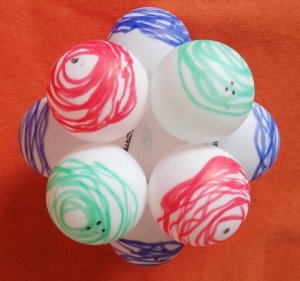In a previous post I published some notes on the dymaxion. This is a bit extra, about relationships between the dymaxion and the astrological zodiac.
The dymaxion is a shape made from 12 spheres surrounding a central (13th) one. Interpreting the 12 spheres as the 12 signs of the zodiac seems a possibility, but the signs of the zodiac have relationships to each other. They are grouped into elements (fire, air, water and earth) and qualities (cardinal, mutable and fixed), so each sign belongs to one element and one quality. For example Aries is cardinal fire. There are four cardinal signs and three fire signs, spread evenly around the zodiac.

The surface of a dymaxion has triangles and squares so it seems reasonable that these groupings of threes and fours should be mirrored.
One way in which the relationships can be represented on the dymaxion is to make each of the four triangular groupings represent a single element, containing a cardinal, mutable and fixed sign. In this picture I’ve coloured the qualities as red, green and blue, so here you are looking at a triangle representing the three signs of one element (perhaps the fire signs: Aries, Leo and Sagittarius).

The way each triangle is coloured should allow the groups of four to also be seen. By turning the dymaxion to look at a square side we can see the layout – here a square of blue spheres (representing perhaps the fixed signs).

There may well be other possible arrangements of the zodiacal relationships on the dymaxion, but this seems to be one possibility. It’s also worth remembering the close relationship between the dodecahedron and the dymaxion. Putting signs of the zodiac on to the dodecahedron goes back to Plato in ancient Greece, but it’s not clear how they were arranged. The relationships of threes and fours are not at all obvious on the dodecahedron, so perhaps we can use the dymaxion to understand this.